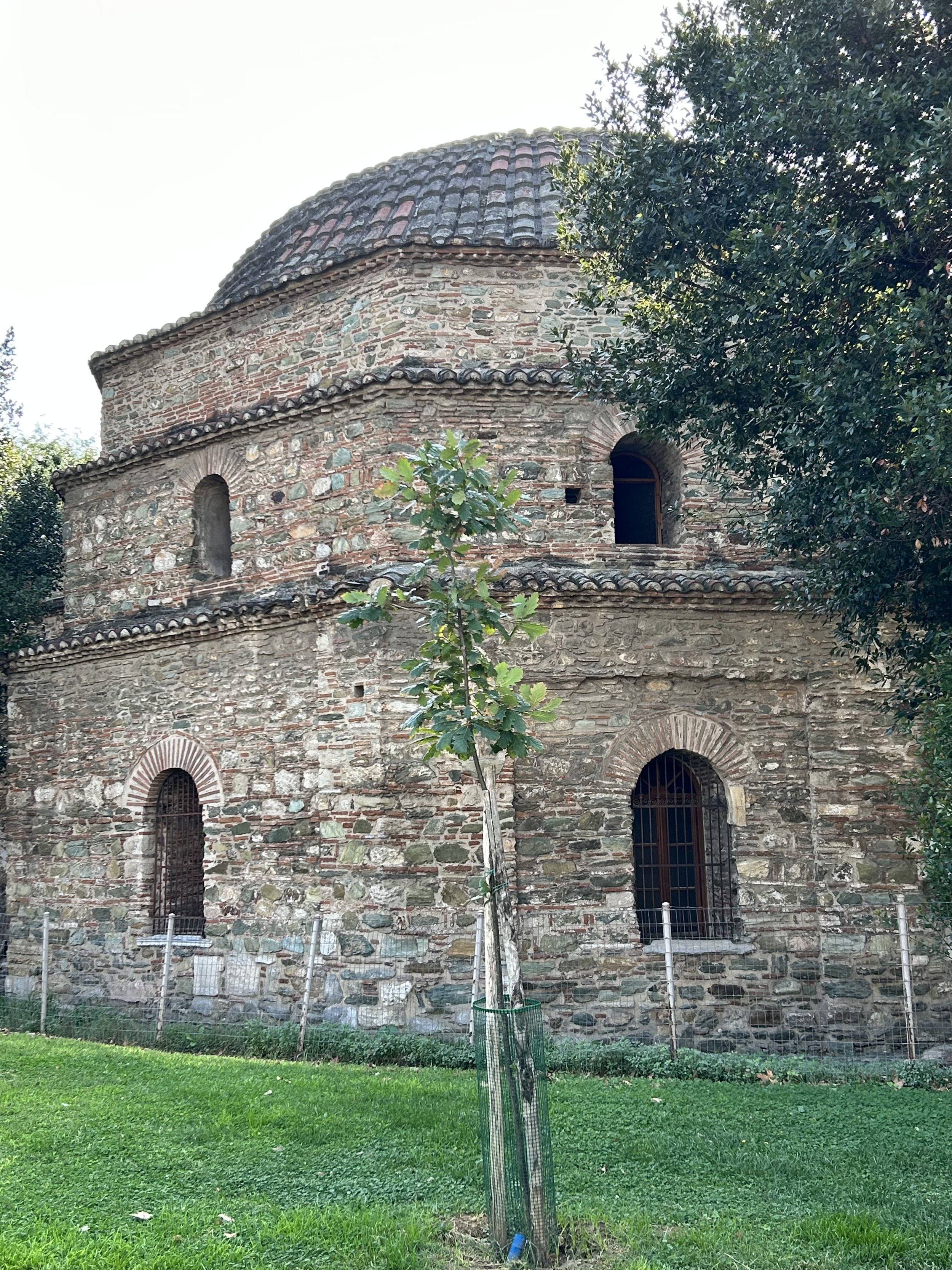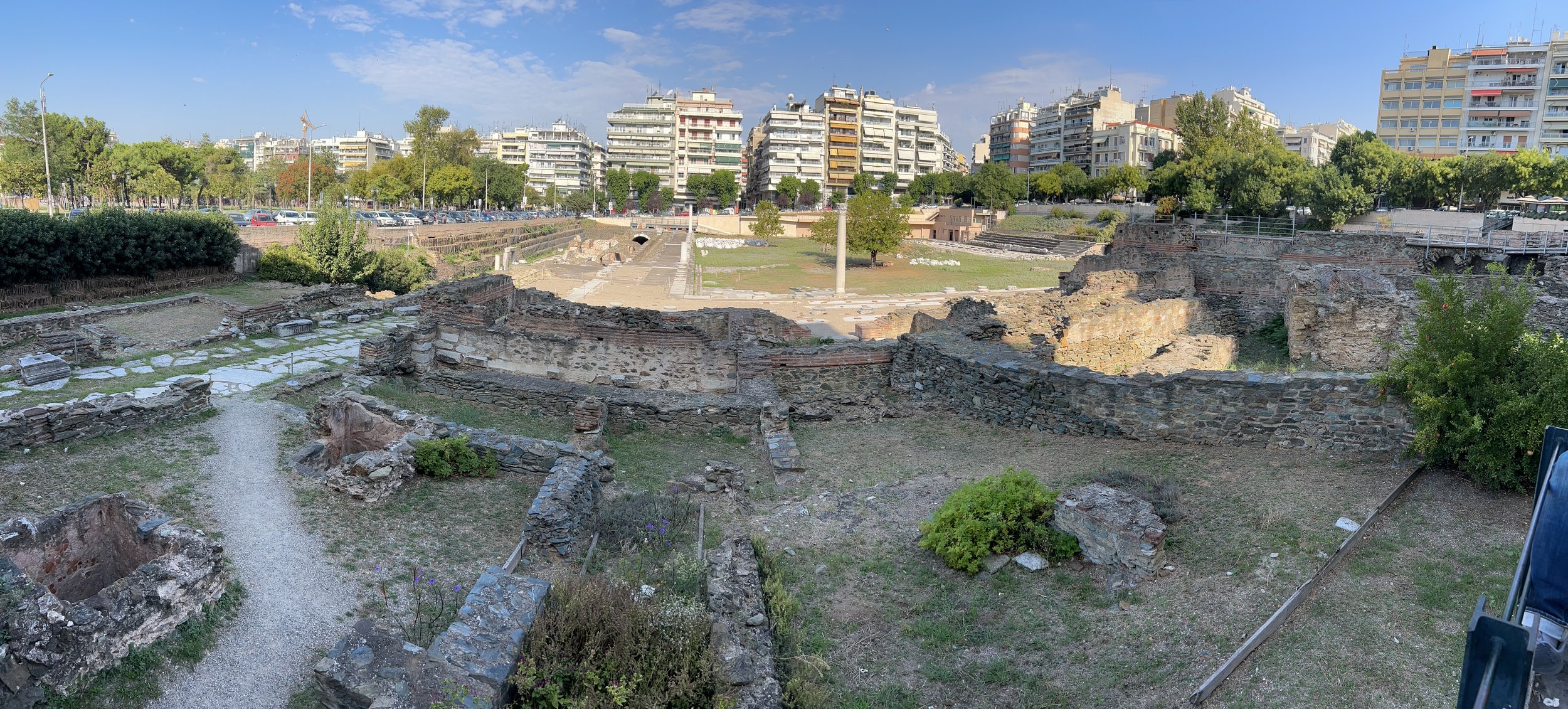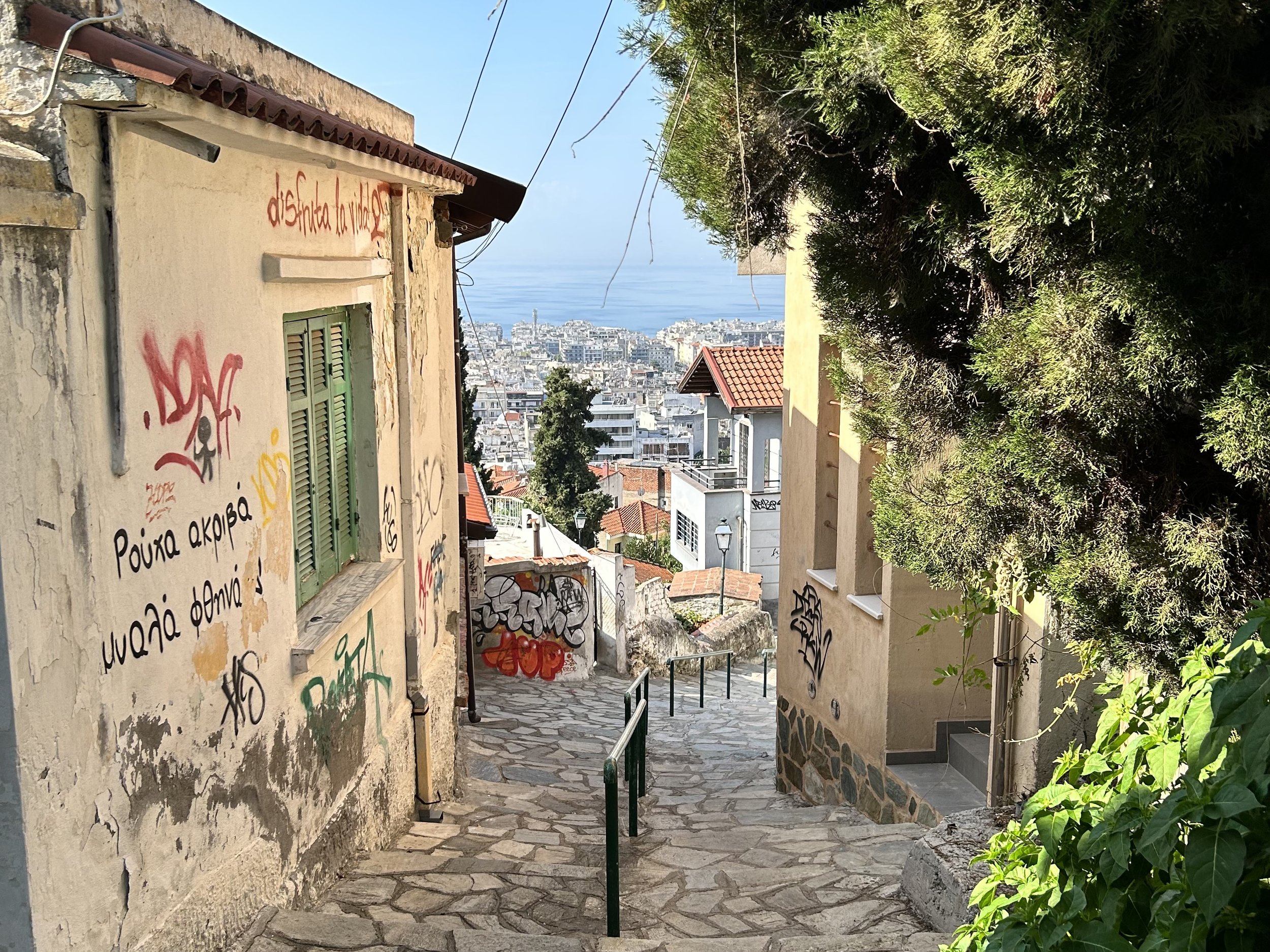Vacation Part 7- Up and Down
Welcome to Thessaloniki, the second largest city in Greece. We skipped the organized tours for the day because our guide book suggested the best way to see the city was on foot. It even offered a turn by turn route that zig-zagged up to the high ground. From the vantage point of our ship’s top deck, we looked at what lay ahead and called an audible play change. The new plan- head straight up the hill to the furthest point of interest and leisurely make our way back down.
Thessaloniki dates back to 316BC and was named for Alexander the Great’s sister. It became an important Roman trade center because of its access to the sea and location on the Roman Via Egnatia military road . The city grew in the 6th and 7th centuries under the Byzantines despite attacks from Slavs and Avars. At the end of the first millennia, the now well fortified city was also harassed by Arabs, Bulgarians and Normans. When the Ottomans showed up around 1387, ownership of the city changed hands several times between themselves, Venice, and Constantinople. It was finally taken for good in 1430, and remained an Ottoman holding until the Balkan Wars in the early 20th century. It was during this time that our hero of modern Turkey, the one and only Mustafa Kemal Ataturk was born in the city in 1881.
We started our trek through the city at Arisotelous Square and headed up hill.
A few blocks from the waterfront, where the Via Egnatia passes directly through the city, Bey Hamam is located right on the Roman road. Built around 1440 by the Ottomans, this very large and well located Turkish bath operated well into the 20th Century.
A city block up the hill from the Via Egnatia, we admired the remains the ancient agora and a small theater. From this point on, the hill became much steeper.
The view from three quarters of the way up. Crossing Olypiados Street, we entered a residential section of town known as Ano Poli (North City.) It is all walking paths and stairways. Unfortunately, graffiti is a serious blight on much of Greece.
At the top of the Ano Poli is the city’s defensive wall. Running parallel to the water front, it was built by the Romans and further enhanced by the Byzantines and Ottomans.
We weren’t able to go in, but you can read about the Vlatadon Monastery here. The monastery was built on or near where Saint Paul preached to the local Jews and the the story goes something like this- For three Sabbaths in a row, Paul engaged the local Jewish community. This got more attention from the local authorities than they could handle, so before they could be arrested again, Paul and Silas made a hasty exit over the wall in the dead of night.
Anchoring the northeast corner of the wall is the Trigonion Tower. From the tower, the city wall descends toward the sea. On the north side of the tower, another section of wall continues around the ancient acropolis and further up to the bastion known as Heptapyrgion.
Heptapyrgion was originally built around 1200 to protect the acropolis. It served as the Ottoman military governor’s head quarters until the late 1800s. It was then converted to a prison known as Yedi Kule, and housed inmates until 1989.
The walls of the fort contain a huge amount of spolia- repurposed stone from old structures.
Looking down into the subdivided prison yard. We highly recommend against booking a stay in a Turkish prison.
Eventually it was time to make our way back down the hill. First it was slow steps on the steep grade back to the Trigonion Tower. From there, we just had to follow the road on the outside of the wall down to the White Tower at the waterfront.
Dating back to forever, cemeteries are on the outside of the city walls.
Built in the 1400s on the sight of previous smaller fortifications, the “White Tower” is the last remnant of the city wall in the modern waterfront.
Rows of apartment buildings and hotels, with our little ship in the distance. At this point we were 4.5 miles into our 6 mile trip. Straight and flat looked really good. Based on our “abbreviated” walk, I wonder if the writer who put together the guide book route ever actually tried it.
The ship getting underway from the commercial port. Thank goodness the next day would be spent entirely at sea.














